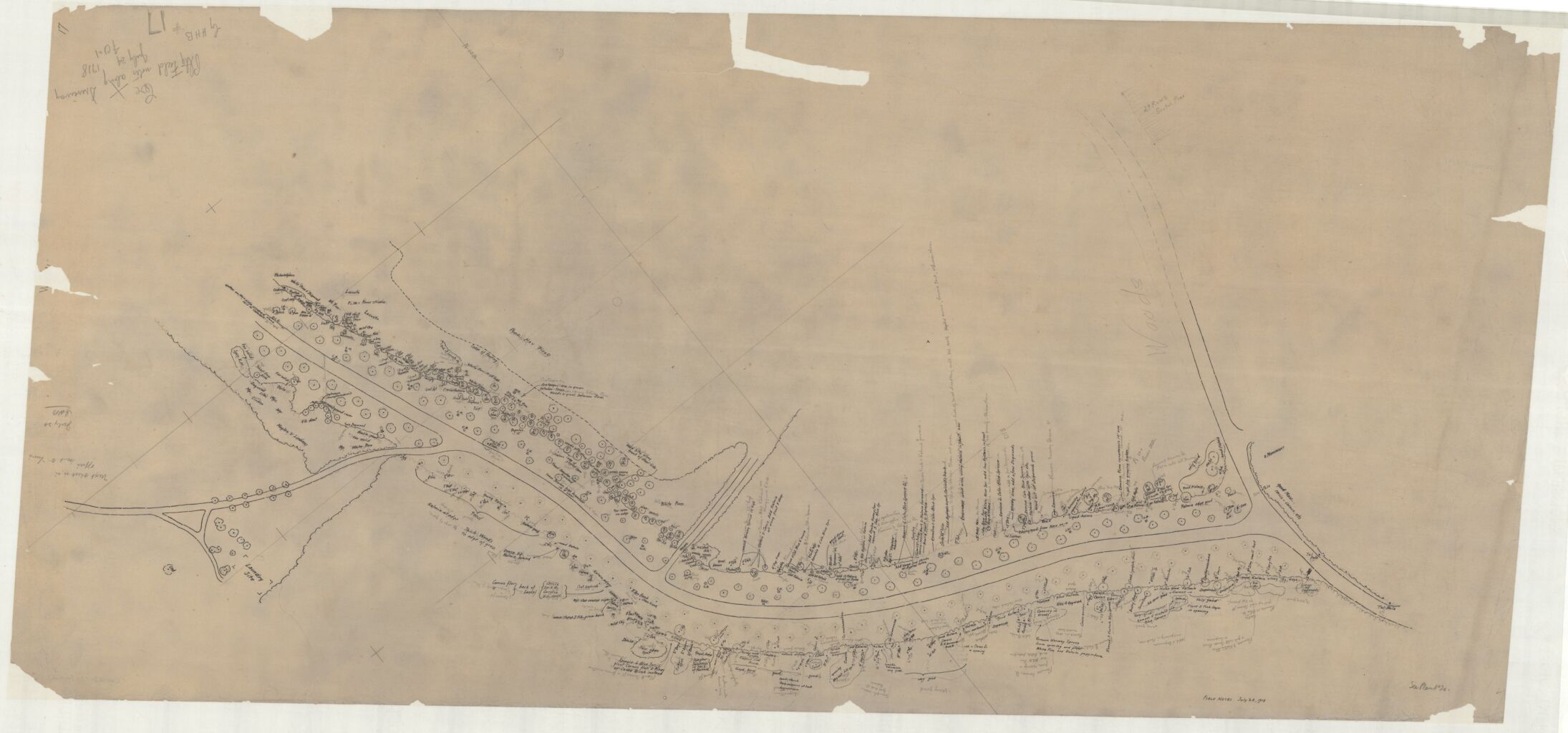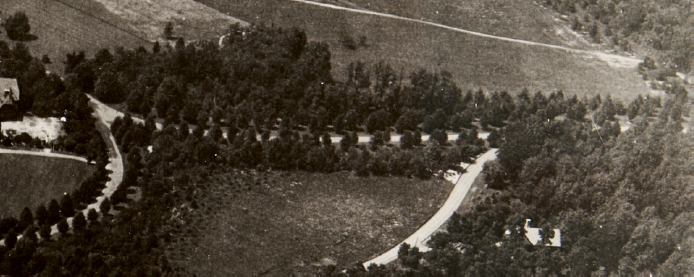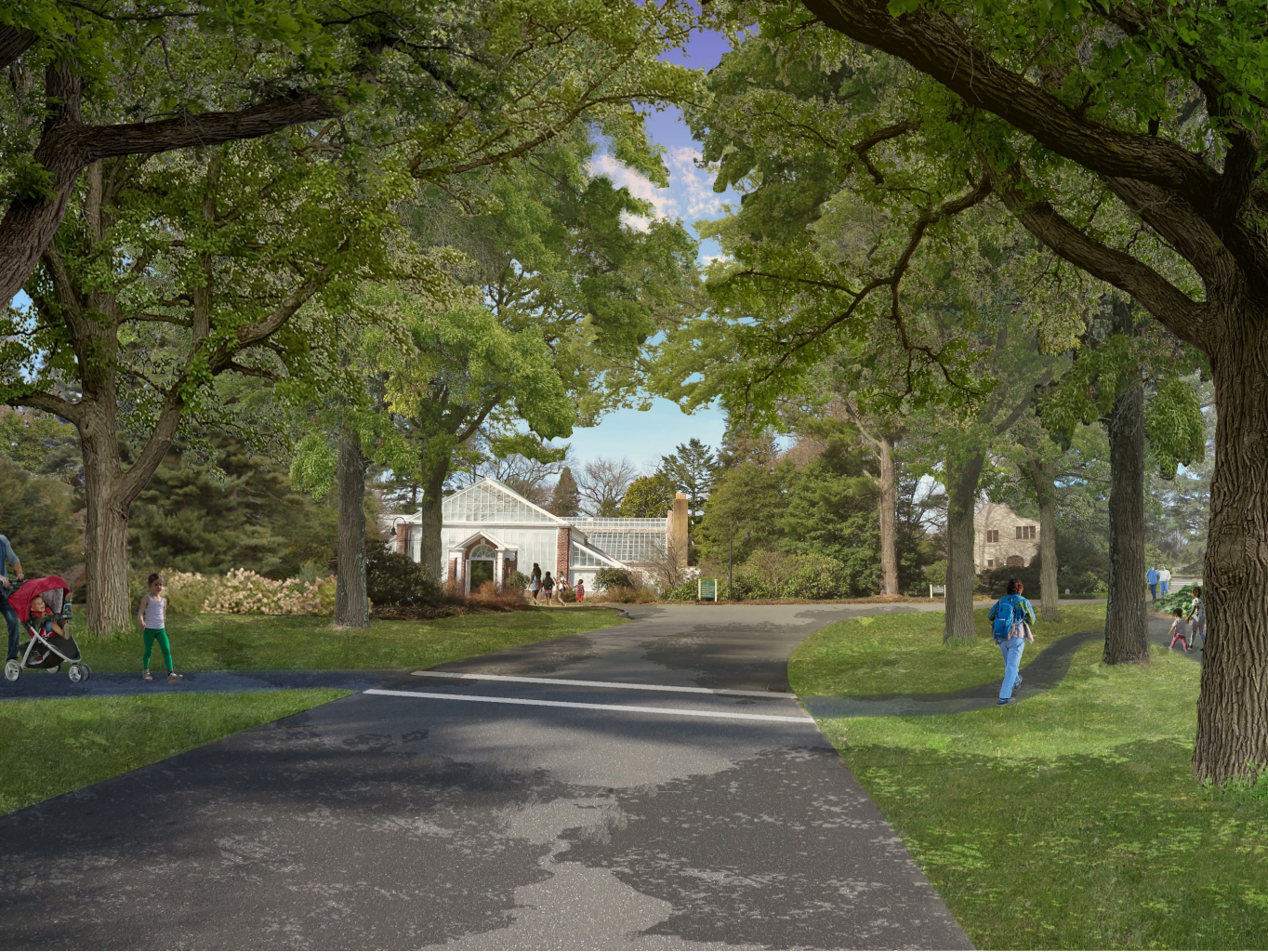If you have visited Planting Fields in the last few weeks, you will have noticed some big changes happening. Planting Fields Foundation has been working to restore the original Olmsted Brothers-designed landscape of our main drive, including bringing back a double allée of trees and returning the drive to a uniform width.
In 2019, with the assistance of the preeminent firm in landscape preservation and stewardship, Heritage Landscapes, we completed a Cultural Landscape Report to guide our understanding of our Olmsted Brothers designed landscape. A Cultural Landscape Report, also referred to as a CLR, is an extensive foundational document that provides a comprehensive look at the cultural landscape origins, evolution and use. The CLR has been a guiding force in our plans to restore and update the landscape at Planting Fields, including this project focusing on the main entry drive.

Planting plans for the main entry drive at Planting Fields, dated July 24, 1918. Courtesy of the United States Department of the Interior, National Park Service, Frederick Law Olmsted National Historic Site.

An aerial photo of the double Beech tree allee, c.1935, courtesy of Planting Fields Archives.
One signature Olmsted design included at Planting Fields was the allée, a path or road bordered by evenly spaced trees. While the original allée was made with beech trees, the new allée will consist of 90-100 oak trees – half will be Quercus alba (white oak) and the other half Quercus muehlenbergii (chinkapin oak). A giant of the plant kingdom, oak trees benefit our environment in many ways. They are champions of carbon sequestration, meaning that they store carbon dioxide and prevent it from entering Earth’s atmosphere. Oak trees also host an incredible range of biodiversity; no other tree supports as much life as oaks do. Doug Tallamy, author of Natures Best Hope: A New Approach to Conservation That Starts in Your Yard who spoke at Planting Fields earlier this year, has written that oak trees can support over 4,000 different species of insects and animals.1 The addition of these mighty oaks to the Planting Fields landscape will benefit the site for centuries to come.
Other integral aspects of this project include the addition of ADA accessible visitor pathways that connect the main parking lot with key areas, a new visitor pavilion, and updated site-wide wayfinding signage. These changes will help all of our visitors navigate the site more easily. The simulated image below shows a time-progressed view of the oak trees, as well as the accessible pathways currently being constructed.

Image courtesy of Heritage Landscapes, LLC.
We thank you for your patience as these exciting and necessary changes are happening at Planting Fields. We will remain open during construction and look forward to seeing you here! The cherry trees are in full bloom, Coe Hall is open for tours, and we have plenty of exciting programming coming up, so be sure to stay tuned.
Further resources:
• For more information about the ongoing restoration projects, please contact info@plantingfields.org
• You can sponsor one or more of our oak trees for yourself or a loved one. Visit our website for more information: Sponsor a Tree at Planting Fields – Planting Fields Foundation
• Read more from Doug Tallamy: Why You Should Plant Oaks – The New York Times (nytimes.com)
[1]Tallamy, Douglas W. Bringing Nature Home: How You Can Sustain Wildlife with Native Plants. Portland: Timber Press, 2009.
Emily Leger, Collections and Exhibitions Manager

